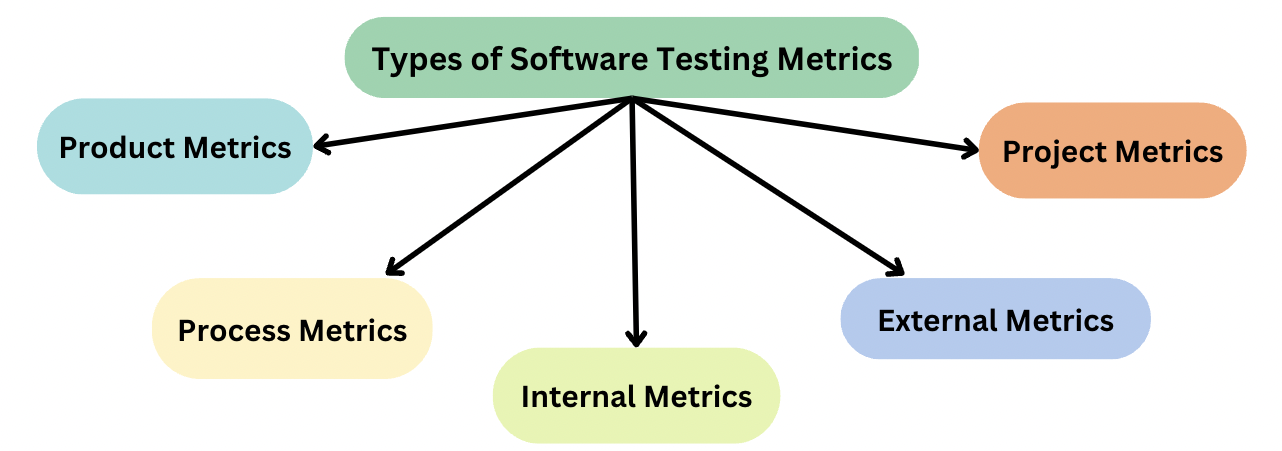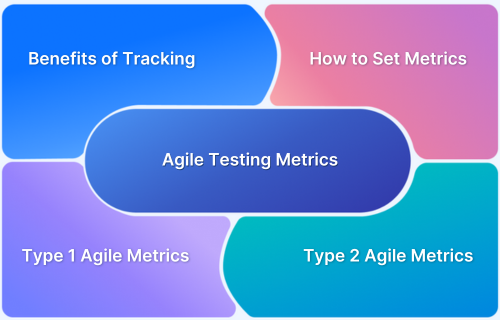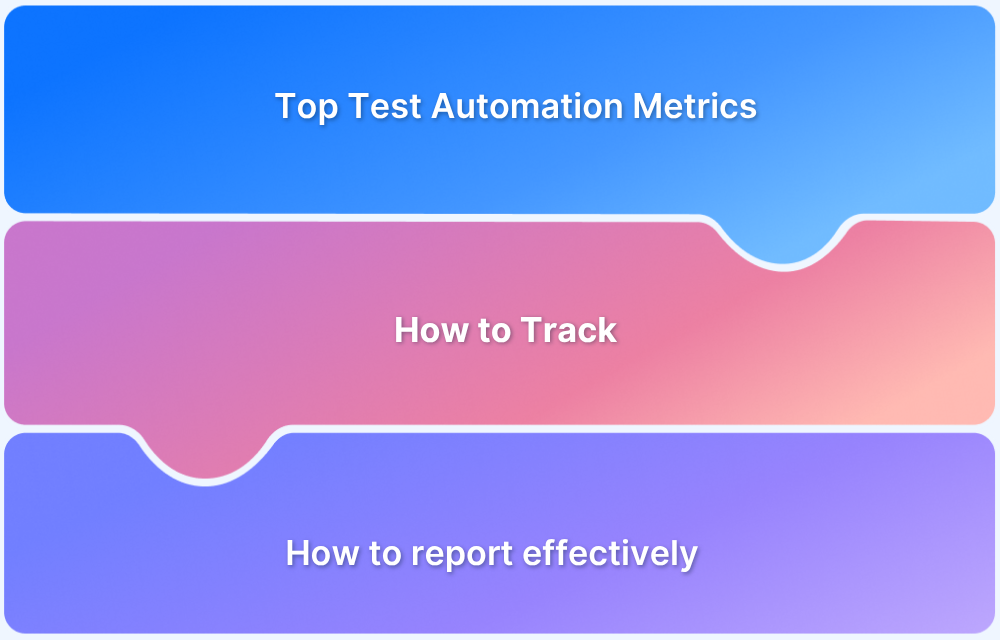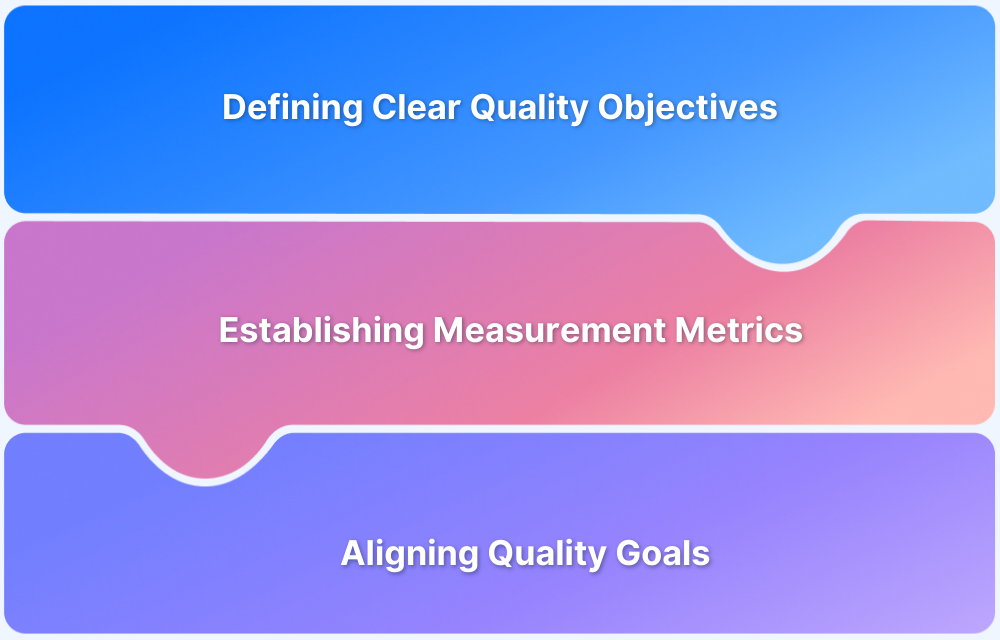What are Software Metrics? How to Measure Them?
By Sourojit Das, Community Contributor - September 9, 2023
The gradual evolution of software metrics has led to numerous proprietary compilations of software benchmark data, such as those compiled by the Software Engineering Institute (SEI), Gartner Group, Software Productivity Research (SPR), the David Consulting Group, and Quantitative Software Management (QSM). Some of these collections may contain over 10,000 items, though these have become increasingly specific and are used only by a handful of organizations to their fullest extent.
- Software Metrics Definition
- Role of Metrics and Measurement in Software Engineering
- Software Measurement Principles
Software Metrics Definition
A software metric is a measurement of quantifiable or countable software characteristics. Software metrics are essential for various purposes, including measuring software performance, planning work items, and measuring productivity.
- Industry standards such as ISO 9000 and industry models such as the Software Engineering Institute’s (SEI) Capability Maturity Model Integrated (CMMI®) help in Utilising metrics to comprehend better, monitor, manage, and predict software projects, processes, and products.
- Software metrics can provide engineers and management with the information required to make technical decisions.
- Everyone involved in selecting, designing, implementing, collecting, and utilizing a metric must comprehend its definition and purpose if it is to provide helpful information.
- Software metrics programs must be designed to provide the precise data required to manage software projects and enhance software engineering processes and services. Organisational, project, and task objectives are determined beforehand, and metrics are chosen based on these objectives.
We use the software metrics to determine our efficacy in meeting these objectives:
- Teams can use software metrics to measure performance, plan upcoming work tasks, track productivity, and better control the production process during project management by observing various figures and trends during production.
- In conjunction with management functions, they can also use software metrics to simplify your projects by devising more efficient procedures, creating software maintenance plans, and keeping production teams informed of issues that need to be resolved.
- Throughout the software development process, various indicators are intertwined. The four management functions correspond to software metrics: planning, organization, control, and enhancement.
The Need for Software Metrics
We reside in a world where quality is essential.
Software metrics provide stakeholders with a quantitative premise for software development planning and forecasting. In other words, the software quality can be readily monitored and enhanced. There is widespread agreement that a focus on quality increases productivity and promotes a culture of continuous improvement.
By measuring problems and defects, information can be obtained that can be used to regulate software products. These can be broken down into five metrics: Reliability, Usability, Security, Cost and Schedule, and Efficiency.
Role of Metrics and Measurement in Software Engineering
A measurement represents the size, quantity, volume, or dimension of a specific attribute of a product or process. Software measurement is a titrate attribute of a property of a software product or the software development process. It is a leader in the field of software engineering. ISO Standard defines and regulates the software measurement procedure.
Software Measurement Principles
The software measurement procedure is comprised of the following five activities:
- Formulation: The derivation of software measures and metrics for representing the under-consideration software.
- Collection: The mechanism used to collect the data necessary to derive the calculated metrics.
- Analysis: the computation and application of metrics and mathematical instruments.
- Interpretation: The evaluation of metrics that provide insight into the representation’s quality.
- Feedback: Recommendation derived from the analysis of product metrics and transmitted to the software development team.
Software quality metrics are performance indicators that assess a software product’s quality. Agile metrics, such as velocity and QA metrics such as test coverage, are typical examples.
Metrics do not enhance development, but managers utilize them to understand the production process better. Metrics present all process elements as data and describe what occurs throughout the endeavor. Without this information, it is difficult for managers to identify problems and make improvements.
However, with the valuable information provided by software quality metrics, teams can:
- Anticipate defects
- Identify and correct problems
- Effectively plan development
- Increase efficiency
How to Define Clear Software Metrics?
The best way to demystify software metrics is to understand fully why they are being monitored in the first place. For e.g if different developers are using other programming languages to write code, then something simplistic like LOC (lines of code) should not be used as it will lead to inherent confusion in the amount of work being done. On the other hand, simply tracking the number of errors may lead to developers avoiding complex constructs altogether and hampering the product’s overall usability.
In these cases, it is better to focus on the exact aspects of productivity that need to be triggered, for e.g. MTTD can be a better metric than simply counting the number of defects as it gives a better understanding of how agile the team is in unearthing defects in the first place.
Read More: How to Set Goals for Software Quality
Types of Software Testing Metrics
Broadly, Software Metrics can be classified into the following types:
- Product Metrics– Product Metrics quantify the features of a software product. First, the size and complexity of the product, and second, the dependability and quality of the software are the primary features that are emphasized.
- Process Metrics– Unlike Product metrics, process metrics assess the characteristics of software development processes. Multiple factors can be emphasized, such as identifying defects or errors efficiently. In addition to fault detection, it emphasizes techniques, methods, tools, and overall software process reliability.
- Internal Metrics– Using Internal Metrics, all properties crucial to the software developer are measured. Line of Control, or LOC, is an example of an internal metric.
- External Metrics– Utilising External Metrics, all user-important properties are measured.
- Project Metrics– The project managers use this metric system to monitor the project’s progress. Utilizing past project references to generate data. Time, cost, labor, etc., are among the most important measurement factors.
Also Read: How to determine the right testing metrics
How to Track & Measure Software Metrics?
An important point to remember is that the metrics list should be defined on a case-by-case basis.
- Mindlessly repeating the metrics offered by another project or tracking whatever is provided by a project management tool or a software development framework/model is an egregious waste of time and effort.
- It is not helpful to track metrics if they won’t help answer inquiries from project stakeholders or won’t change how teams are working. For instance, performance metrics are highly valued in a real-time processing system, but availability is prioritized in a distributed asynchronous system.
- Management teams gain from tracking software metrics by keeping tabs on software development, establishing objectives, and quickly analyzing results.
- Simplifying software development too much, on the other hand, could cause engineers to lose sight of the big picture and stop caring about things like making products that people want to use.
Of course, none of this would be helpful without collecting and analyzing software metrics. The first problem is that software development teams prioritize action above tracking metrics.
Optimum Software metrics need to have several key characteristics, such as –
- Simple and programmable.
- Unambiguous and reliable
- Always utilize the same units of measurement.
- Flexible and simple to fine-tune regardless of the programming language used
- Easy to understand
- It is possible to validate for accuracy and dependability.
- Essential in making high-level decisions.
Effective software metrics assist software engineers in identifying flaws in the software development life cycle so that the software can be developed by user requirements, within the anticipated time frame and budget, and so on.
The stages enumerated below are used to develop effective software metrics.
1. Create Definitions: To develop an effective metric, it is necessary to have a clear and concise definition of the entities and their measurable attributes. To avoid ambiguity, terms such as defect, size, quality, maintainability, and user-friendliness should be precisely defined.
2. Define a model: A model is derived for the metrics. This model helps define the calculation of metrics. The model should be easily adaptable to future specifications.
The following questions must be considered when defining a model.:
- Does the model offer more information than is currently accessible?
- Is this information useful?
- Does it contain the desired details?
3. Establish criteria for measurement: The model is decomposed into its lowest-level metric entities, and the counting criteria (used to measure each entity) are defined. This defines the measurement approach for each metric primitive. For instance, line of code (LOC) is a standard metric to estimate the extent of a software project. Before measuring size in LOC, precise counting criteria must be established.
4. Choose what is desirable: After determining what and how to measure, it is necessary to determine if action is required. For instance, no corrective action is needed if the software meets the quality requirements. If this is not the case, then goals can be established to assist the software in meeting the set quality standards. Note that the objectives should be reasonable, achievable, and based on actions that provide support.
5. Statistical reporting: Once all data for a metric has been collected, it should be reported to the appropriate party. This includes defining the report format, the data extraction and reporting cycle, the reporting mechanisms, etc.
6. Additional criteria: Additional ‘generic’ qualifiers for metrics should be determined. In other words, a valid metric for multiple additional extraction qualifiers must be identified.
The selection and development of software metrics are not complete until the relationship between measurement and people is understood. The success of metrics in an organization is contingent on the dispositions of those involved in data collection, calculation, and reporting, as well as those using the metrics. In addition, metrics should be centered on the process, initiatives, and products, not the individuals involved in the activity.
Benefits of Tracking Software Metrics
While tracking effective software metrics for any process is relatively challenging, it can be gratifying to the organization in the long run.
- Utilizing accurate software metrics is crucial to the software development process as they help plan and enhance the quality of the overall software development process. This helps to reduce errors and delays and provides accurate and timely data on performance and productivity.
- Accurate metrics enhance Process Transparency, enabling teams to be on the same page and take ownership of any mistakes without unnecessary finger-pointing. This creates an environment of trust and dependency and fosters continuous improvement.
- Software metrics help teams to make objective decisions without bias or incorrect assumptions. This aids in critical thinking and leveraging unbiased automated data to make optimal choices.
- It allows teams to communicate accurately with stakeholders on the project’s health and represent productivity and performance quantifiable.
- Software metrics can be represented by a web-based dashboard, accessible 24 hours a day, seven days a week, automatically delivering all stakeholders an up-to-date view of the project. This helps senior management to make critical decisions and align priorities as needed.
Challenges in Tracking Software Metrics
It is observed that management is not committed to utilizing software metrics because of the following factors:
- Management opposes measurement. – Software engineers do not measure or acquire data because management does not understand their significance. Management authorizes a metrics program but does not assist in putting the program into effect.
- Data collection that is not adequately utilized – The data collected during the measurement procedure should be usable for process, project, or product improvement. This is because accumulating inaccurate data leads to incorrect decision-making, which in turn causes deviations from the software development schedule.
- Measuring excessively and prematurely: Occasionally, a software project collects excessive data in advance, which is challenging to manage and analyze. This causes the implementation of the metrics to fail.
- Measuring the incorrect factors: Establishing metrics is a time-intensive process, and only those data that provide useful feedback should be measured effectively and efficiently. A few queries should be answered to determine whether data should be measured (if the answers are no, metrics should not be established).
Best Practices for Deciding Software Metrics and Tracking it
Over time, organizations have established several guidelines for the precise application of software metrics:
- Link software metrics with goals and objectives. Some common objectives are reducing the number of errors and accelerating the completion of duties, among others.
- Monitor trends, not values. It is essential to track not the precise values of productivity metrics but rather their trends over time. It provides additional information regarding software development and how it varies.
- Reduce measurement intervals. Using shortened periods to analyze metrics enables the software development team to determine how well they develop by analyzing their progress over time.
- Utilize only those program metrics that affect work output. Several software metrics do not assess the software’s quality or the team’s workflow. Only software metrics contributing to progress toward goals and providing verifiable, consistent progress indicators are essential.
Closing Notes,
The success of Agile development is contingent on receiving immediate feedback and implementing incremental enhancement. Refined and specific metrics help testers remain on track and know exactly what numbers they must achieve. The inability to meet these targets necessitates managers and senior staff reorienting the pipeline. This also allows for efficiently utilizing time, money, and other resources.
With BrowserStack Test Management, teams can create, manage, and track test cases & test runs with integrated workflows. Improve software quality through real-time insights into releases.




